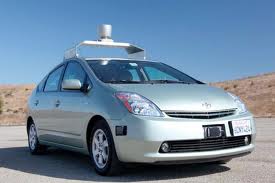Google has been given the go-ahead to test its prototype driverless cars out on the road in Nevada, U.S.A.
The modified Toyota Prius is entirely computer-controlled, and is capable of performing all the functions of a regular car, just without the driver.
An array of laser sensors mounted on the roof and in the front grill monitors the car’s surroundings at a rate of 20 times per second. It detects objects and hazards in the vicinity, and automatically sets up a buffer-zone to avoid them. Based on the information supplied by the sensors, the computer makes decisions on how to handle the car, e.g. speed up, slow down, and stop.
At this stage, the conditions for ‘driving’ a driverless Google car are that there must be two people inside at all times. One must monitor the computer, and the other must sit behind the wheel, in case something does go wrong. The occupants of the car will also be held responsible for the car’s ‘behaviour’ while it’s out on the road.
The driverless Google car is a great way to reduce distracted driving. If it catches on, we can expect to see a reduction in the number of road fatalities amongst owners of Google cars.
By handing control over to a computer, it eliminates the human error drivers would be prone to. With the computer in control you can now safely put on your makeup in the rear-view mirror, text your friends, or make phone calls without dinging the bumper of the car in front of you.
Eventually Google cars will be able to communicate with one another. Congestion will ease as cars are able to drive closer to one another at high speeds. In self-driving mode the car won’t speed, tailgate, or cut off other drivers.
Furthermore, those currently unable to drive cars will be able to ‘get behind the wheel’, as it were, and drive again. The elderly, sick, disabled, and even children will be able to program the car to take them to their destination.
The benefits of driverless cars are huge, and safety is a factor that features heavily. Computers will reduce the chances of car crashes, but it cannot do anything about the cars still with human drivers. There will always be risk involved in operating a vehicle, and it behooves us to remain vigilant, whether we have autopilot or not.
Check us out on Facebook and Twitter for special deals, competitions and more!



